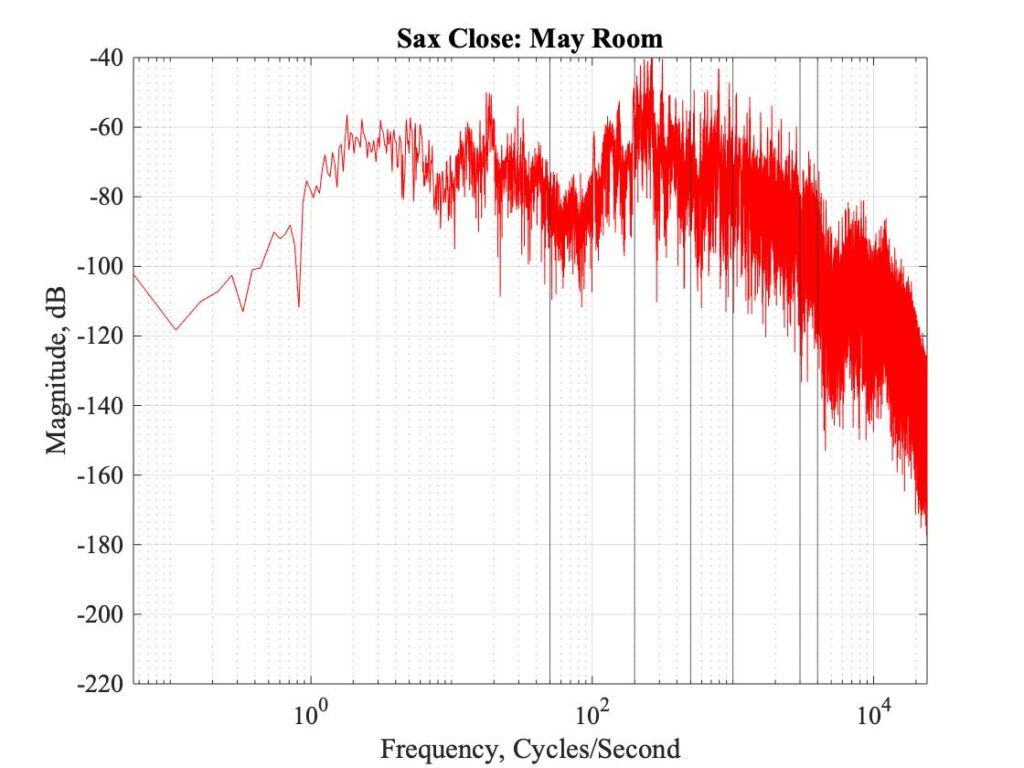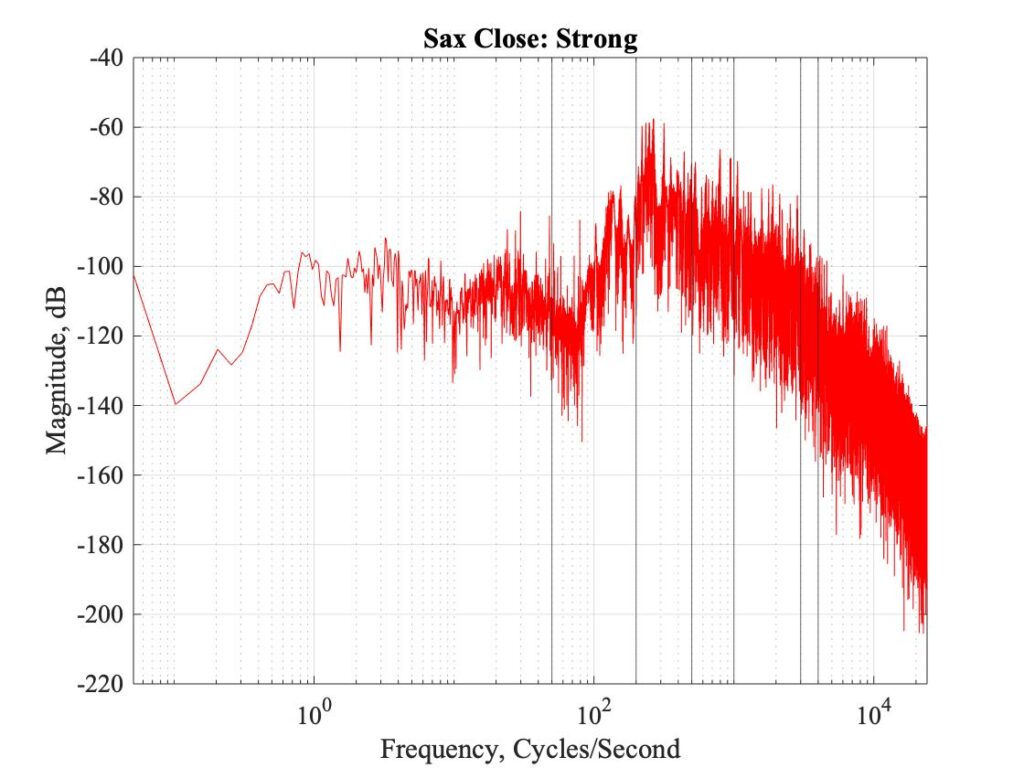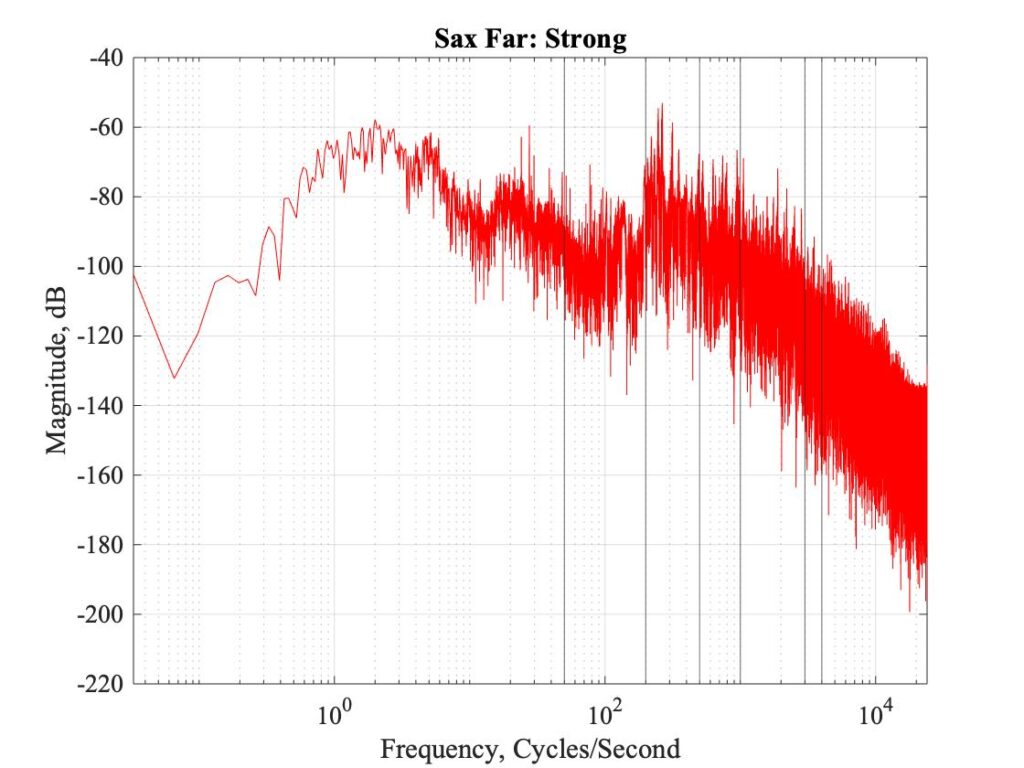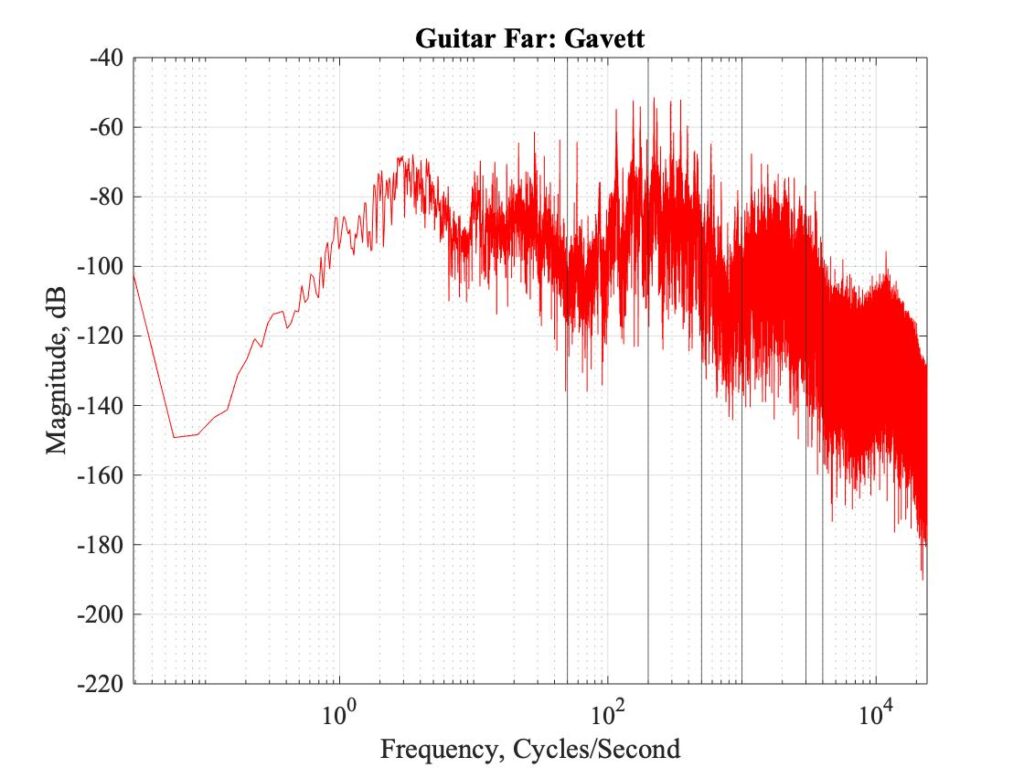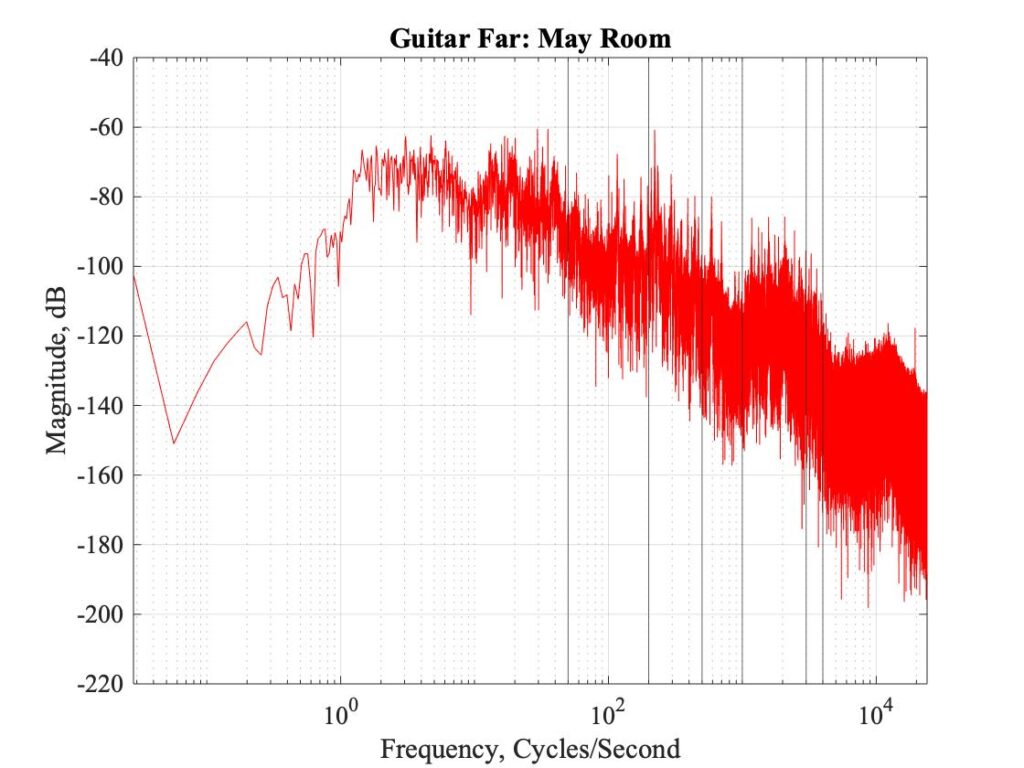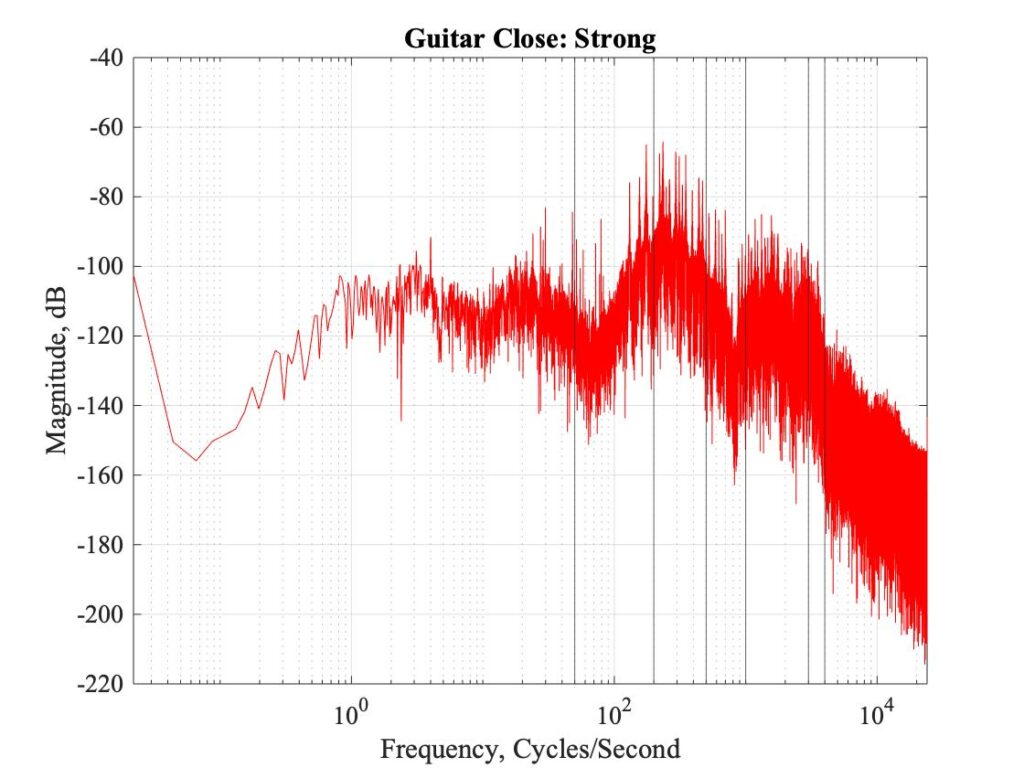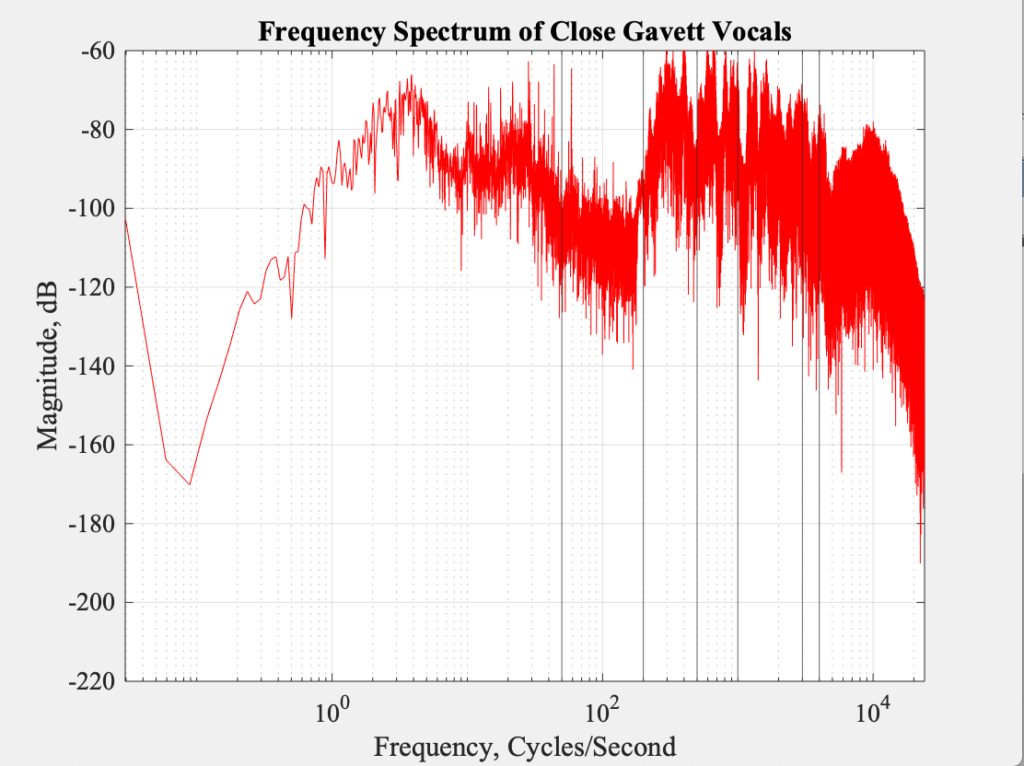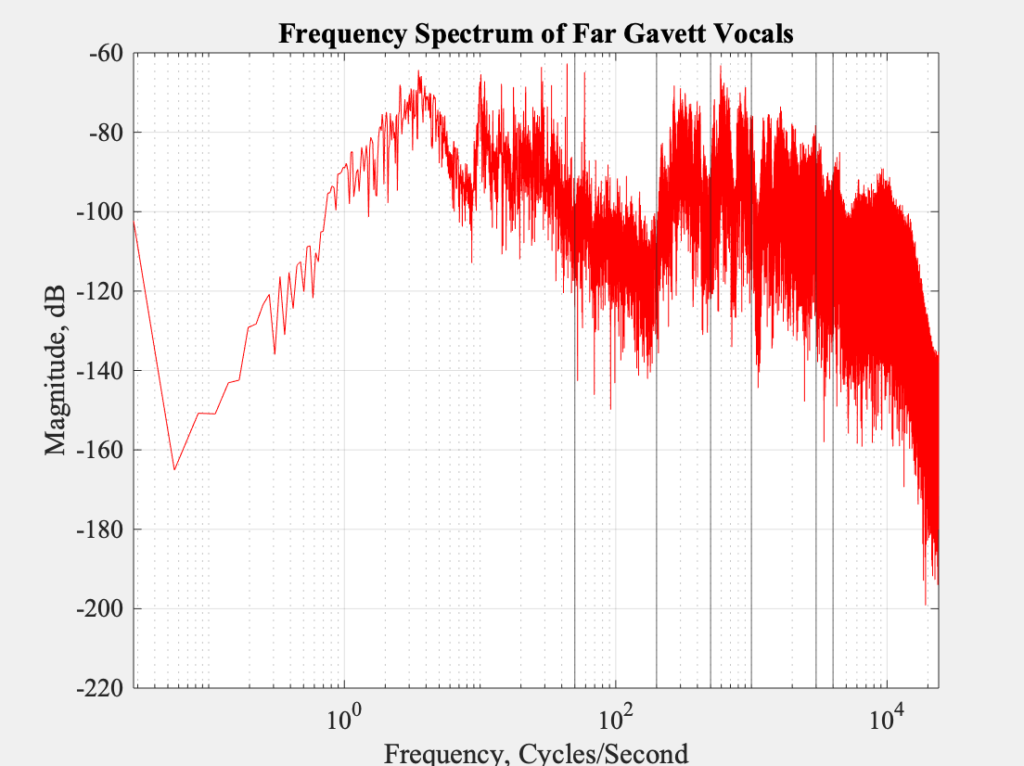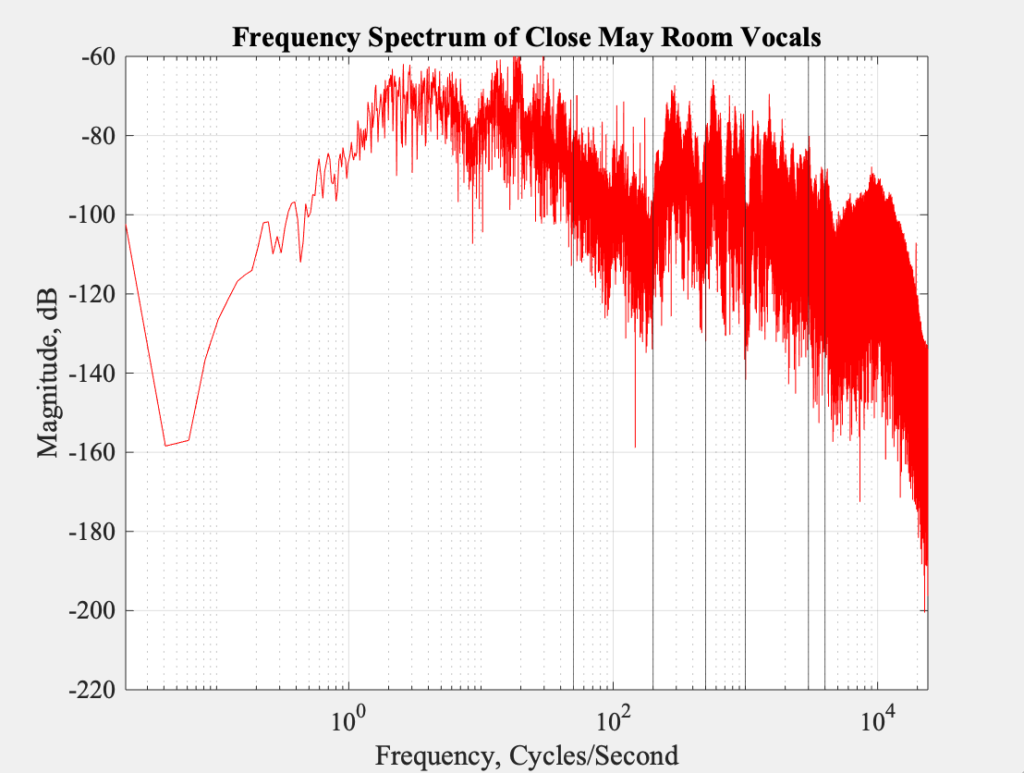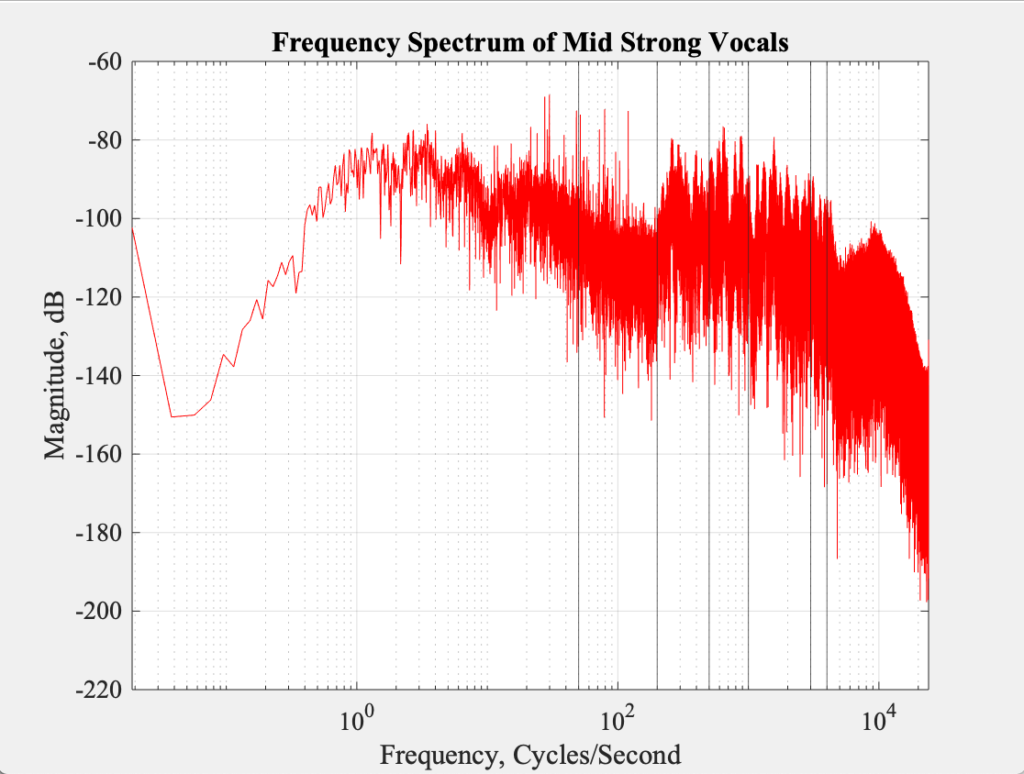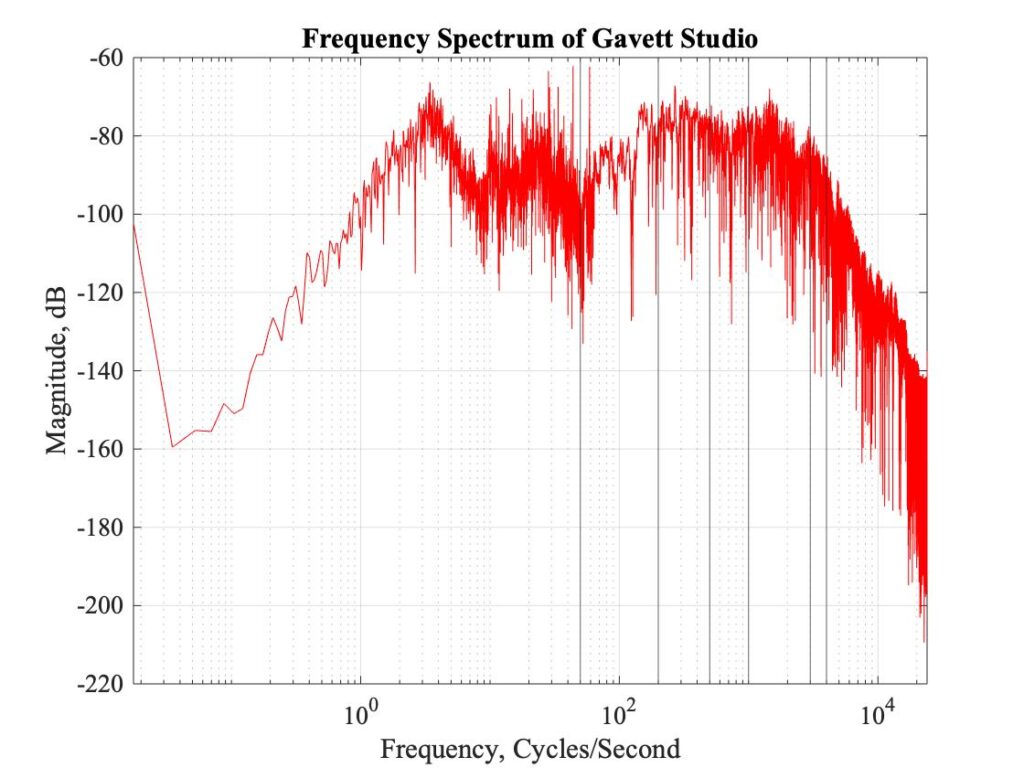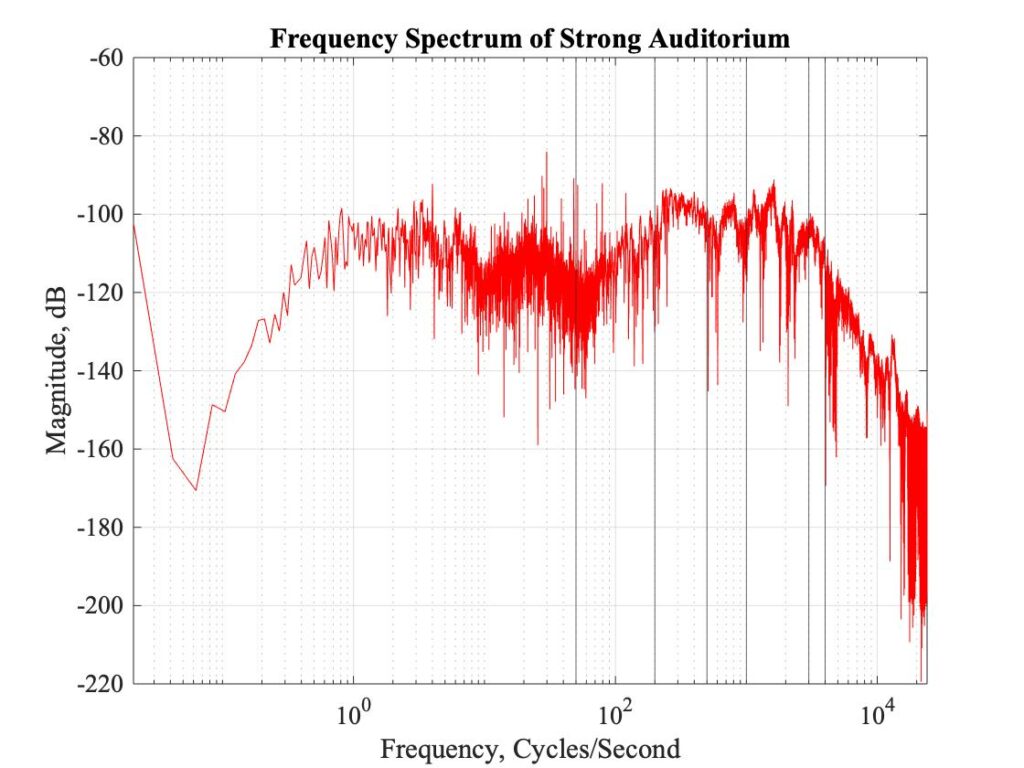Our project for the semester focused on, as the title implies, room acoustics and their effect on the recording of various musical instruments. When we formed our group, we all came together with an interest in the recording process and acoustics. Our background, while slightly diversified by instrument and experience, is similar in the frame of our education, all having been through classes within the AME department such as Musical Acoustics, Recording, and various physics and math courses. We then quickly developed our research topic after combining these interests.
At the beginning of the semester, our goal was to analyze the frequency spectrum of four different instruments in four different rooms across campus. Due to COVID restrictions, we ended up limiting that scope to three instruments (electric guitar through amp, baritone saxophone, and female vocals) in each of three rooms across campus (the May Room, Gavett Studios live room, and Upper Strong Auditorium) plus a sine sweep transient response of each room, for a total of 24 total harmonic measurements.
Work then proceeded to developing the methodology for performing our experiment. We used the Gavett studio session, conducted first, as a test run to work out any issues in our process, as all three of us are most familiar with the acoustics of that space, and it was easiest to reserve for work. First, the 20Hz to 20kHz sine sweep was played through the guitar amp and recorded into Pro Tools through a condenser microphone centered in the room with an omnidirectional polar pattern and a +10dB pad. Keeping the settings on the microphone the same, we then took a measurement of each instrument up close and as direct as possible, then another measurement in the same vertical position from each instrument, but spaced 12 feet back. Each recording existed as a separate track in Pro Tools and was subsequently bounced to a .wav file after the session for analysis in Matlab. This process was replicated in the May Room and Strong Auditorium, with the addition of a third set of measurements in Strong at the middle of the seats to replicate the apparent sound to an audience member.
After the recordings were taken, each .wav file was processed in Matlab and the frequency responses, measured in decibel magnitude, are displayed below. In addition, the audio clips of each instrument in each room are presented along with the sine sweeps so you can hear for yourself the different room responses.
Baritone Saxophone (played by Ben Kevelson, fellow AME 292 student):
The baritone saxophone was the instrument playing the lowest notes. In the May Room, we can see that the far frequency response taken several feet away from the saxophone has a much flatter curve. We would expect that the sax loses some of its “body” as we get more room sound.
Electric Guitar through Amplifier (played by co-author Eric Ciocci):
Comparing the two room responses in Gavett, the largest difference is in the high frequencies (around 10k). As we can see in Gavett’s room response, the frequency response sharply drops off around 8 kHz. We can see this reflected in the Far Gavett measurement, where the bump around 10 kHz is brought down. Listening to the recordings, we can hear the electric guitar lose these high frequencies, and consequently sound much darker.
Female Vocals (sung by co-author Madeleine Vogel):
We can see a great demonstration of how a room’s frequency response can alter a recording in the Strong measurements for the vocals. We can see in Strong’s frequency spectrum that it has a very flat spectrum. As we progress from the close to the far vocal responses, we can see the frequency response gradually even out. Analytically, we can expect for the voice to lose its body in the recordings, as the bump from 200 Hz to 5 kHz smooths out.
20Hz – 20kHz Sine Sweep
We can note a few interesting things about these room responses. On the left, we show the response for Gavett Studio, which has a very flat overall response. In the middle, we show the response for the May Room. The May Room shows a greater response at lower frequencies, which may be from the noise that we heard when recording in the room. On the right, we have Strong Auditorium’s room response. As the largest room we recorded in, it has the quietest and the flattest response.
Future Analysis & Project Limitations
A deeper look into this project in an ideal world without COVID-19 limitations could reveal some interesting insights into how room acoustic affect the harmonic patterns and frequency responses in instrument recording. Access to more performers with a wider variety of instruments, a longer amount of available time to work in the various spaces, and the ability to meet in person as a group and work on the analysis together would allow us to perform more exact measurements and gain a better understanding about the experiment we conducted. Closer analysis of room materials, acoustical structure, and instrument wave patterns would also add to the wholistic nature of the experiment and provide more information about performance halls and instrument recording in those spaces.
Experimentally, there were also a few shortcomings with the implementation of the study too. Measurements of distances and angles were inexact, and the vocal recordings were performed in slightly inconsistent keys and tones. The sine sweep was also played in the spaces through the guitar amp, so there is a potential for some distortion or frequency loss in the lower end of the spectrum analysis due to the harmonic limitations of the amp itself.
Overall, the project was successful given the circumstances of the semester, and the analysis conducted fulfilled our research project begun in August.


